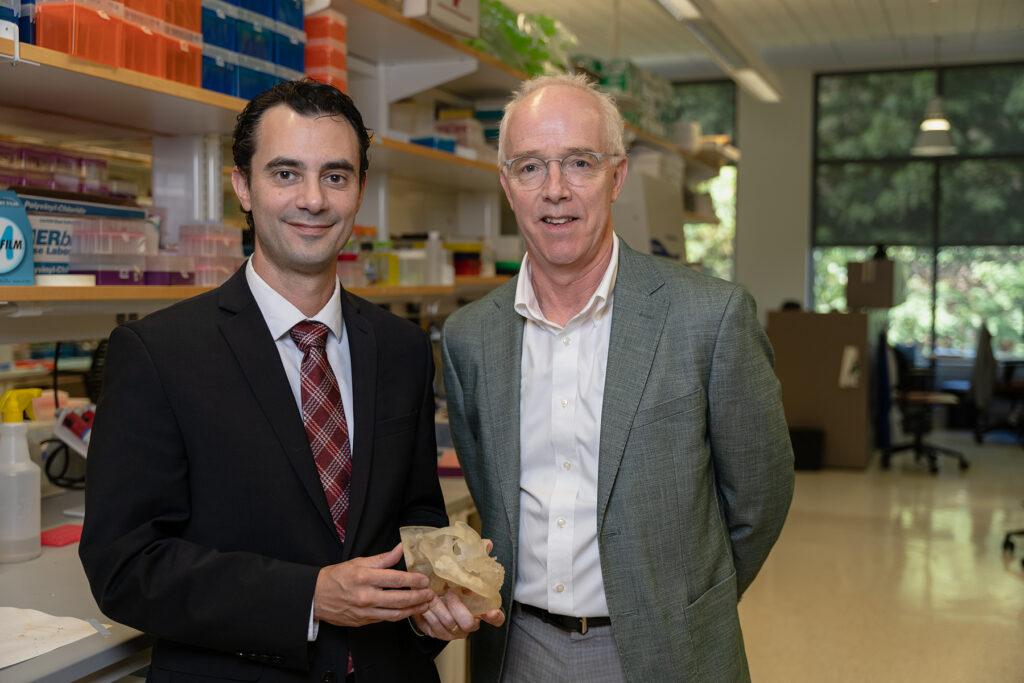
We are thrilled to share a major development in the temporomandibular disorders (TMD) research landscape: the University of Pittsburgh has recently been awarded a new, large-scale NIH-funded grant to deepen our understanding of the complex conditions that constitute TMD.
What’s the Project About?
- The initiative is called CREATE (Collaborative for REsearch to Advance TMD Evidence). It is part of a larger umbrella, TMD IMPACT.
- Over five years, the project will enroll 1,000 individuals with TMD and 300 pain-free controls across five U.S. sites.
- The team will collect a richly detailed set of data, including brain imaging, RNA sequencing, epigenomics, proteomics, microbiome profiles, and more, to look for biomarkers and refine disease models.
- One of the goals is to “phenotype” (i.e., subdivide) TMD patients: identify subtypes of patients whose pain mechanisms differ, so treatments can be better targeted.
- The project also includes an educational component, engaging dental and medical students through training and curriculum development.
Why This Matters
- TMD is not a single disorder but an umbrella term for more than 30 conditions affecting the jaw joint and surrounding structures — there’s huge heterogeneity in how patients present.
- Past work, notably the OPPERA study, focused on risk and onset, exploring who might develop TMD. This new effort is the “next step,” zooming in on people already living with chronic TMD pain.
- The multi-site design is essential to capture broad, meaningful data.
- By integrating a biopsychosocial perspective, combining biological, psychological, and social factors, the project hopes to capture the complexity of pain as experienced by real people.
- Ultimately, having better subtyping (knowing “which patient is which type”) should allow researchers to run smarter clinical trials and match therapies to the patients most likely to benefit.
What this means for patients and advocates
- This is a major vote of confidence: $17 million is a significant commitment from the National Institute of Dental and Craniofacial Research.
- As project lead, Dr. Alejandro Almarza emphasized, “One of the things that is important here is the patient advocacy group. They are a key component to every decision we make.”
- The inclusion of TMJA represents a powerful example of patient-centered science, where those affected by TMD have a meaningful seat at the table.
- Over time, the hope is that discoveries from CREATE will translate into more precise diagnostics, better pain predictors, and targeted treatments.
- As data accumulates, this work could also shape clinical care guidelines and standards of care for TMD.
Challenges Ahead & What to Keep in Mind
- Translating complex “omics” and imaging findings into actionable treatments takes time; biomarkers don’t always map directly to therapies.
- Because TMD is so heterogeneous, patient-to-patient variability remains a challenge.
- Clinical translation (getting from lab findings to patient care) often takes many years; this project is a vital step in a multi-year journey.
- Ensuring diverse representation across age, sex, race, comorbidities will be crucial, so the results apply broadly to all patients.
How You Can Stay Engaged
- Our TMJ patient community can help by spreading awareness of this project and its goals. The more patient voices are heard, the stronger the impact.
- If you or someone you know meets the inclusion criteria (when recruitment begins), consider participating. Patient-centered data is what makes studies like this possible.
- Stay tuned for updates. We’ll keep you informed as findings emerge or recruitment launches.

I have had 5 surguries on my right TMJ. I am 71yo. The first in 1983. The last in 2018. The last surgery saved my life, chronic pain will kill directly or indirectly. I still have pain but it is manageable. I have my life back. Michael
Ive been dealing with agonizing pain and discomfort from TMJ.
Ive tried many of the usual things to try and help. but to no avail
I was told about 10 years ago I had bone loss etc, and its worse and worse and hit a wall with insurance coverage.
If they do need research patients Id love to be considered.
Thank you
Hello. I live in the Uk. I suffer from severe Tmjd that is thought to be muscular in origin. On 25th July 2024 i felt “something” rip-like a richochet-in my right jaw. I only have ever had pain on this side but have never felt a “rip” before. An mri showed the joint itself was ok and so it is thought to be muscular in origin. The headache was instant over the forehead/behind eyes, neck pain was instant(and different) to what i already have and the trigger points in my trapezious/neck/scalenes were instantly back. My jaw is even more sensitive to talking/smiling/laughing/crying. It was bad enough before…. The scm has a huge impact on tmjd too from my experience. Although this study is amazing it will all be a little too late for me BUT i would absolutely love to help in anyway possible to advance any learning/solutions. Maybe because it would feel that the pain has not been all in vain-and to help future patients from the dire experiences with some doctors/ specialists we deal with-ontop of the pain. There is sooo much to learn and am truly grateful that this study is happening. As i live in the UK could i ask if there is any way at all to participate-or at least give symptoms/triggers/insight. Thank you Carol